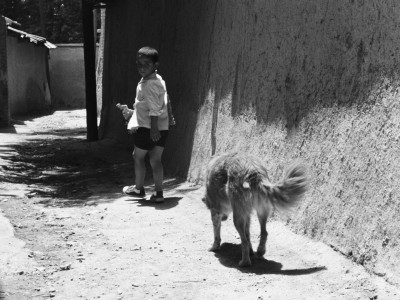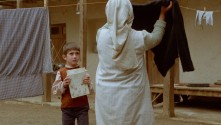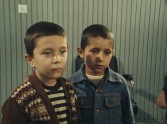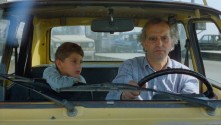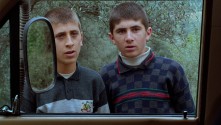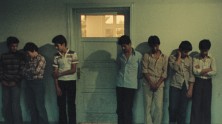
Where is the Friend’s House?
(Khane-ye doust kodjast?)
With Babek Ahmed Poor, Ahmed Ahmed Poor, Khodabakhsh Defaei.
Iran, 1987, DCP, color, 83 min.
Persian with English subtitles.
DCP source: Janus Films
The problem isn’t that Kiarostami’s films are esoteric, simply that they’re different from Western and other Iranian films alike: in the way they’re put together (without scripts and, in most cases, without professional actors), in the way they address us, and in what Kiarostami includes and leaves out. Where Is the Friend’s House?, one of his most popular films in Iran, is a miniature epic about a schoolboy trying to return a classmate’s notebook. Like the somewhat related And Life Goes On… and Through the Olive Trees, both shot in the same section of northern Iran, this is a sustained meditation on singular landscapes and the way ordinary people live in them; an obsessional quest that takes on the contours of a parable; a concentrated inquiry that raises more questions than it answers; and a comic as well as cosmic poem. It’s about making discoveries and cherishing what’s in the world, including things that we can’t understand. – Jonathan Rosenbaum
Referring to his first film as “the mother” of all the work that followed, Kiarostami focuses on what would be a common subject: the child’s journey. Though this film is not a long one, the path is still filled with significant Kiarostamic traits: dynamically graphic framing, suspenseful ambiguity with tangential distractions, a play with expectation and a mischievous Western soundtrack—which, in this case, includes a jazz variation on the Beatles’ “Ob-La-Di, Ob-La-Da” known for the refrain “Life Goes On.” – BG
-
How to Make Use of Leisure Time: Painting (Az oghat-e faraghat-e khod chegouneh estefadeh konim: Rang-zanie)
Directed by Abbas Kiarostami.
Iran, 1977, DCP, color, 7 min.
Persian with English subtitles.
DCP source: Janus Films
When I was working for the Center for the Intellectual Development of Children and Young Adults [Kanoon], there was no boss to put pressure on us to make a certain type of film. But we noticed that most films then weren’t suitable for children, so we decided to make educational films about the social relationships of children. I found a Canadian film catalog containing descriptions of over fourteen hundred educational films, including some by Norman McLaren, and I used that as a starting point for thinking up ideas for films of my own. – AK
